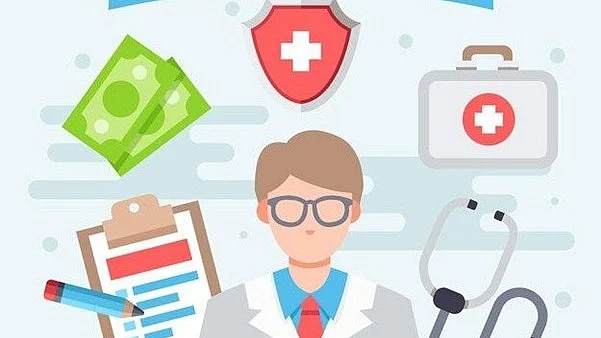Health insurance in India: Why rural communities are still left behind
Awareness about health insurance plans in India is quite minimal in rural India, and existing schemes reach only a negligible few

A minor fever may become a financial crisis for a family living in a village. Unlike cities, there are not many hospitals in rural areas. Often, they have to travel far to get treated. The awareness about health insurance plans in India is quite minimal in rural India, and existing schemes reach only a negligible few. Although government initiatives attempt to address these concerns, deep-rooted challenges still leave rural populations vulnerable. Let's explore healthcare challenges and possible solutions to improve healthcare in rural India.
Challenges in healthcare for rural India
Getting good healthcare in Indian villages is a problem due to the following reasons:
● Lack of Insurance Knowledge: Most people do not know anything about insurance benefits. They are unaware of how policies work and how claims are handled. Misinformation travels fast, causing mistrust of the insurance companies. Many think that insurers deny claims unfairly or have hidden terms.
● Affordability and Economic Constraints: Poor families can barely afford premium payments. Most people treat health insurance as something not so urgent. Huge out-of-pocket medical expenses cause them to refrain from seeking early medical attention, thus increasing the burden.
● Poor Health Facilities: Most villages have no hospitals; patients travel miles to hospitals. Network hospitals are mostly scattered in cities. The rural facilities have limited specialists and no up-to-date medical equipment.
● Barren Policy Structures: Claim procedures entail too much paperwork and take a long time to approve. Many policyholders drop claims because of frustration with bureaucratic delays.
● Digital Divide: Poor internet connectivity in rural areas makes online policy enrollment hard. Digital payment options are not accessible to people without smartphones or banking services, which hampers smooth premium payments and claim reimbursements.
Government initiatives and their limitations
Ayushman Bharat - Pradhan Mantri Jan Arogya Yojana (PM-JAY) gives free treatment to the poor family. Rashtriya Swasthya Bima Yojana (RSBY) started to provide health insurance to employees in the unorganised sector. Many states also have their own health programs to protect families from medical bills.
The poor outreach does not bring awareness to the eligible beneficiaries. There is no proper documentation, hindering people from accessing their benefits. Also, lengthy enrolment procedures are discouraging. Only a few private hospitals are a part of such programs, mainly due to delayed reimbursement and lower treatment percentages. So, patients must travel far to get treatment.
Private insurers increasing coverage for rural health
Government initiatives cannot cover a big rural population alone in India. The following measures by private insurance can mke health insurance for family more accessible for rural India:
● Simplification of policy terms: Terms can be made simple in regional languages and in an easy-to-read format. Elaborate details of coverage, exclusions, and claim procedures can reduce misunderstanding and create more trust.
● Improving awareness and education: Insurers can reach the grassroots through village meetings, radio programs, and community events. They can collaborate with local leaders, self-help groups, and NGOs to disseminate accurate information and dispel myths about insurance.
● Subsidised and Tailor-made Insurance Plans: Private insurers can offer subsidised policies in collaboration with the government. By making premium payments flexible, such as monthly or seasonal instalments, insurance can become more accessible to rural families with irregular incomes.
● Healthcare Infrastructure Development: Private insurance companies can help hospitals establish cashless treatment facilities. With telemedicine and mobile health centres promoted, medical care facilities will also reach far-flung villages in time.
● Digital Access: Digital enrollment and easy mobile banking can be simplified to reach the villages. Making digital payments accessible through collaboration with fintech companies and government initiatives will smooth the premium payment and claiming process.
Takeaway
Health insurance must be covered for each citizen, and yet it leaves out rural communities. It needs the coordination of the government, private insurers, and healthcare providers to close these gaps of awareness, affordability, and poor infrastructure. It would strengthen the healthcare services of rural areas and also make insurance simpler, so this gap could easily be filled to make it fair for everyone.
This is an advertorial. The article is being published as received.
Image source: Freepik
Follow us on: Facebook, Twitter, Google News, Instagram
Join our official telegram channel (@nationalherald) and stay updated with the latest headlines
